LETS SPARKLE
A Talk and Presentation at the December Social meeting 2022
Introduced by Val Bone, with Nick Silver and John Badley. 44 people attended the evening.
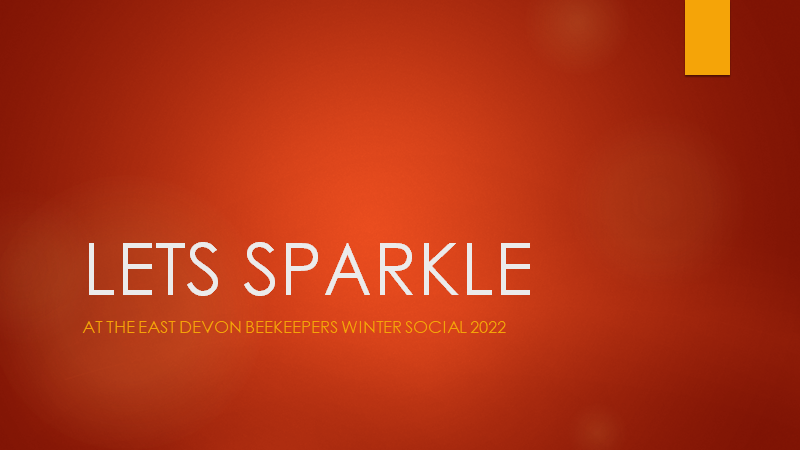
Introduction by Val Bone: Our Honey judge at Honiton Show said, ‘Show honey should sparkle’, hence the title. We aim to look at how you go that little bit further to produce honey for the Show table. Just as with livestock at the Show, the competitors spend time turning an everyday animal into a perfectly washed, groomed and polished specimen. It’s the same with honey. We have on show two perfectly good, wholesome jars of honey straight from stock, but how do you achieve that little extra to present it as ‘Show Honey’? Nick will now take you through those steps to produce the SPARKLE!
Nick. Processing Run Honey
The schematic below shows the steps necessary for processing run honey. Liquifying (if the honey is set), straining to remove debris, settling to remove bubbles and conditioning to produce the sparkle.
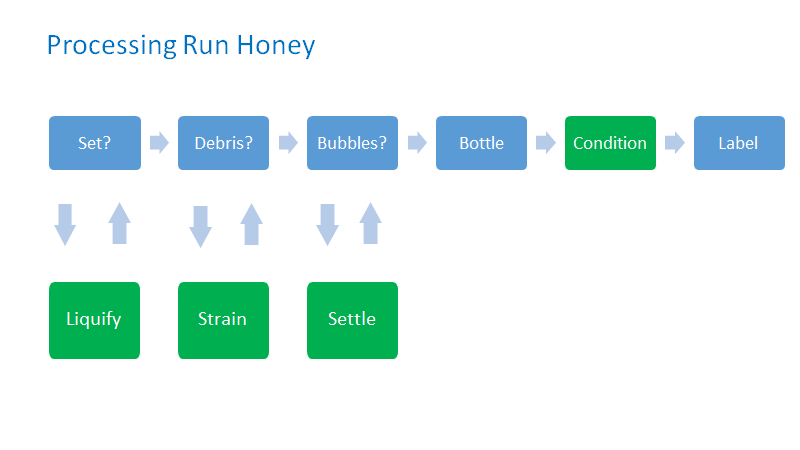
How much heating?
Honey subjected to heating will produce a breakdown substance called hydroxymethylfurfuraldehyde (HMF) which has a legal limit in honey of 40mg/kg honey. The graph below shows the relationship between Time and Temperature. Following the blue dashed lines, a temperature of 40°C for c9days will reach the 40mg limit, whereas a temperature of 50°C will only take 2-3 days to reach the same amount. At 60°C the safe limit is well under 1 day!
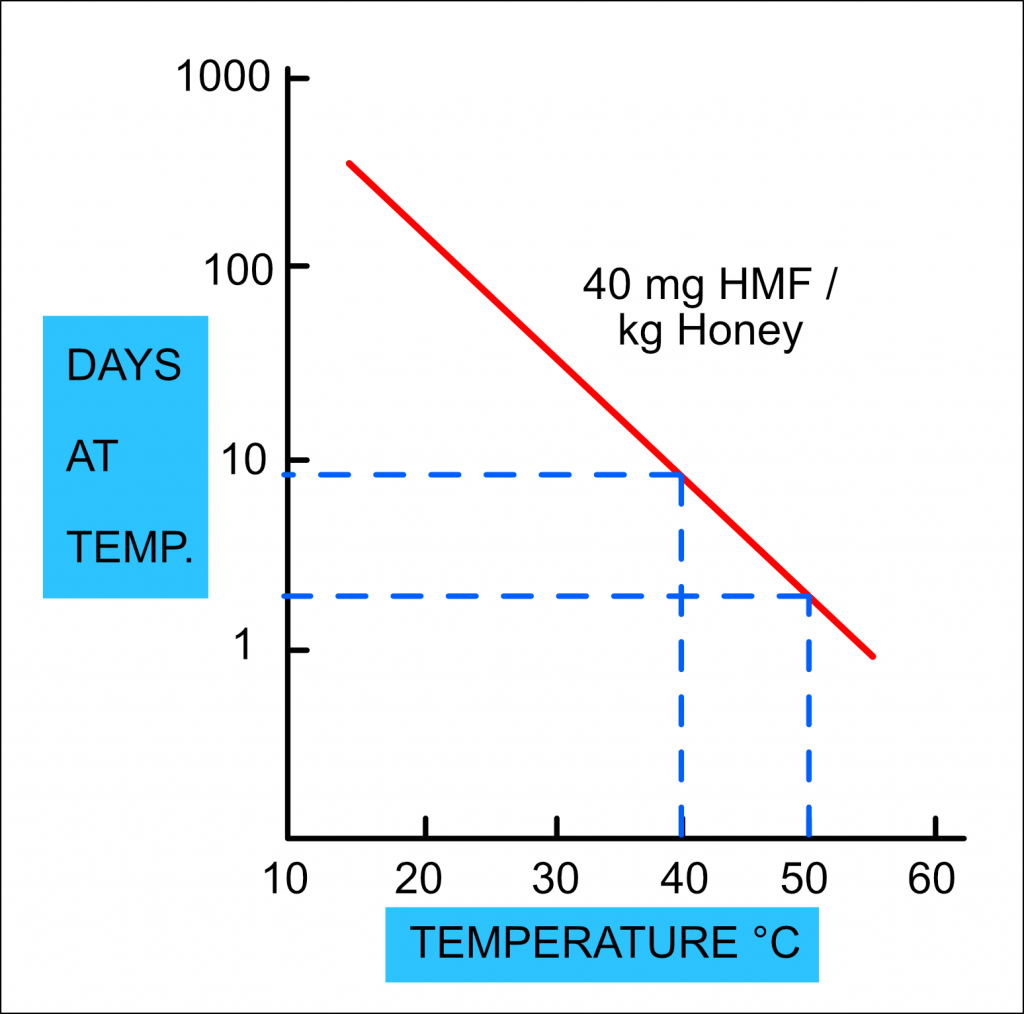
Liquify
This can be achieved by either heating in a warming cabinet (below left) or a bain marie (below right). Stirring occasionally will speed up the process. Hooper suggests 52°C for 2 days. Basterfield Honey Farm suggest ‘up to 50°C’
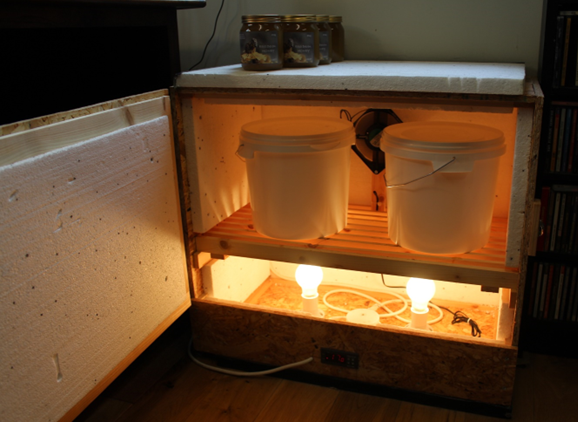
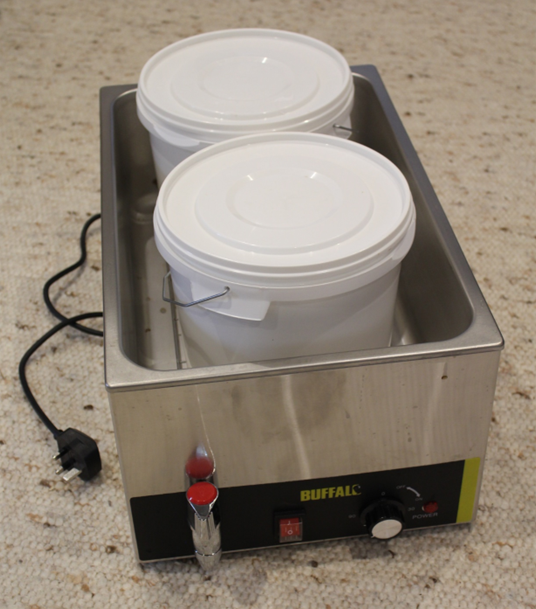
Strain
For the hobbyist beekeeper, straining immediately the honey is removed from the hive and spun from the frames is an easy option (below left). The honey is still warm so will flow through your straining system easily. Double stainless sieves recommended (coarse followed by fine) as they can be quickly washed and dried if blocking occurs.
Straining liquified honey can cause problems with sugar crystals blinding the mesh. The heated sieve (below right) is a useful piece of kit for speeding up the operation. The heated conical mesh is 350 micron, followed by a 200 micron straining cloth over the settling tank.
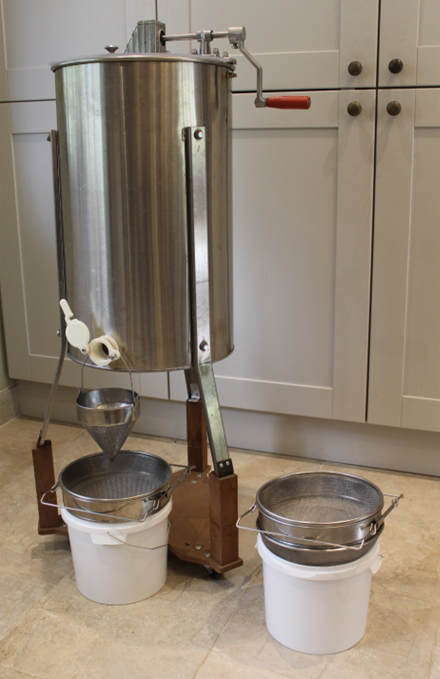
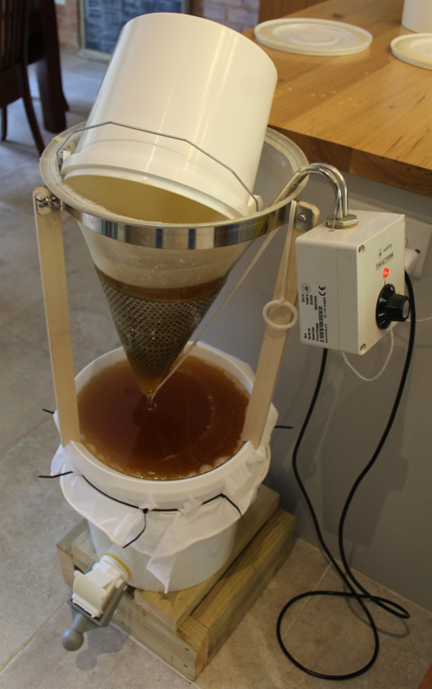
Settle
Settling allows any bubbles to rise to the top of the tank prior to bottling. Without settling your honey jars will look like the example on the left. Settling should produce sparkling honey shown on the right. Hooper suggests ’24 hours in a tall, narrow tank’.
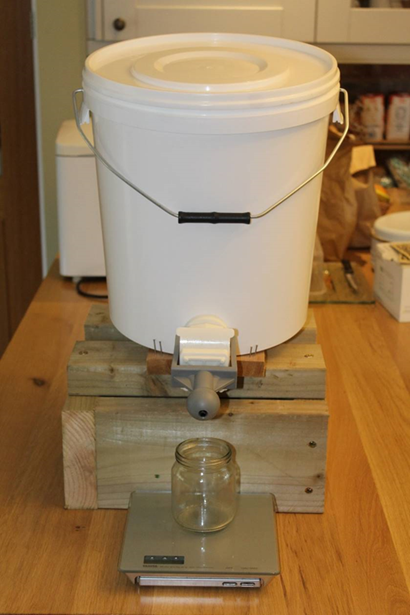
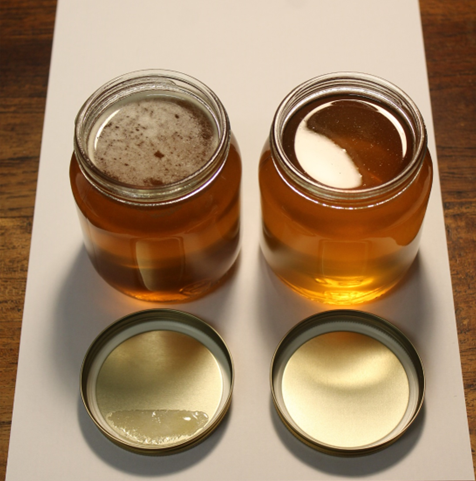
Condition
Conditioning removes all the remaining tiny crystals and will ensure clear sparkling run honey for 3-6 months. Hooper recommends 62°C for 1 hour. Basterfield Honey Farm recommend 62°C for 30 mins.
See images below. In either case, add the water to just below the lid. Jars should not sit directly on a hot metal container. Cool rapidly after heating.
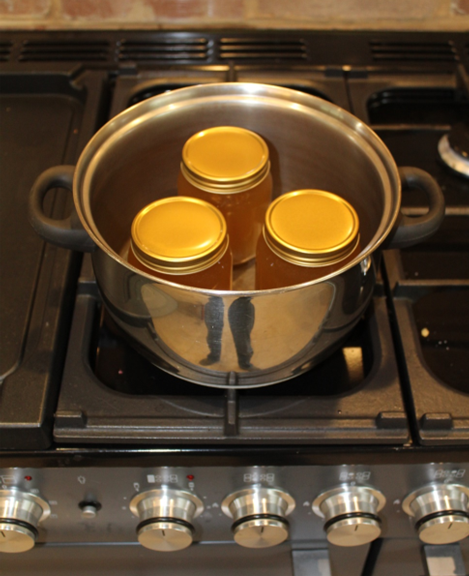
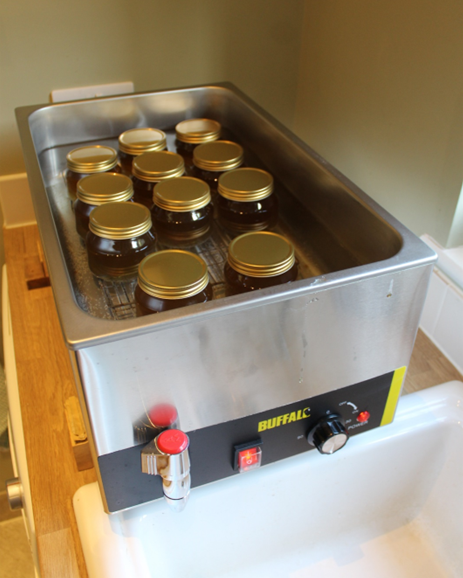
John. Hints and Tips for Award-winning Honey
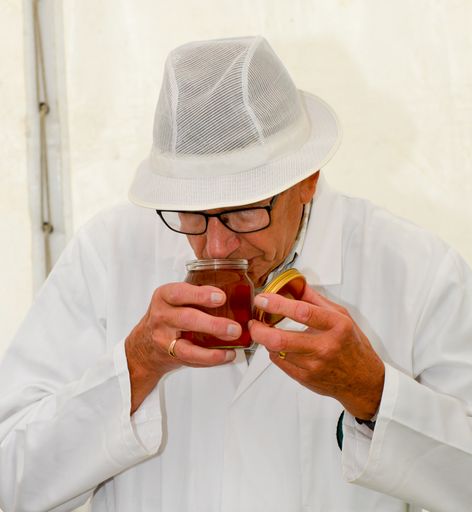
Meet our Honey Judge
Jack Mummery
BBKA Senior Judge
Checking head space aroma
What is the Judge looking for?
Read the Schedule !
- Class 1. Two matching 454g (1 lb) jars of Light English Honey.
- Class 2. Two matching 454g (1 lb) jars of Medium English Honey.
- Class 3. Two matching 454g (1 lb) jars of Dark English Honey.
- Class 8. Six matching transparent jars of English Honey, minimum jar size 345g (12 oz), labelled as for sale…
There are also Novice Classes for honey. A novice is anyone who has NOT won a prize at any Honey Show.
- Class 16. Two 454g (1 lb) jars Light English Honey.
- Class 17. Two 454g (1 lb) jars Medium or Dark English Honey.
- Class 18. Two 454g (1 lb) jars soft set English Honey.
- Class 19. Three 454g (1 lb) matching jars of English Honey.
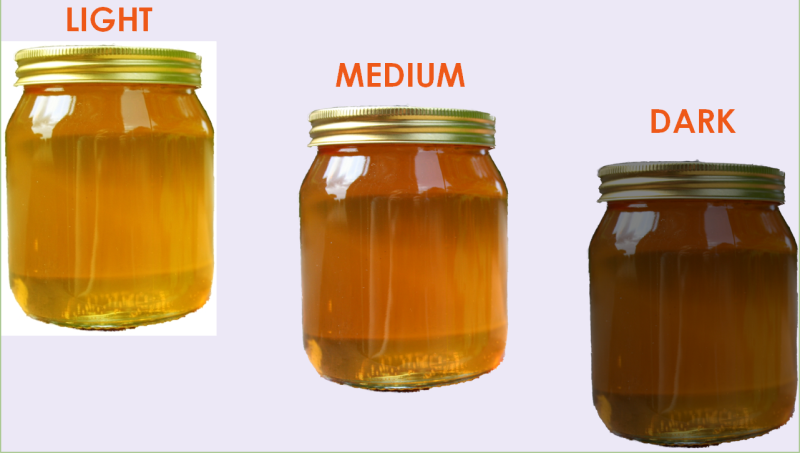
Honey should be:
- Free from bubbles, crystals or debris.
- All jars filled to the same level.
- Once filled, keep jars upright.
- Put lids on immediately to maximise head space aroma.
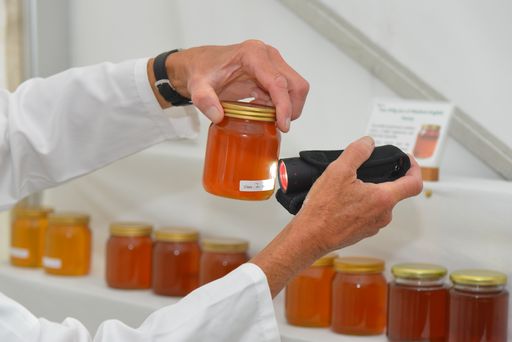
Do try this at home!
Checking for bubbles, crystals and debris.
Jars should be:
- Matching i.e., from the same batch.
- Must be spotlessly clean.
- Free of chips or damage.
- Polish the outside when on display.
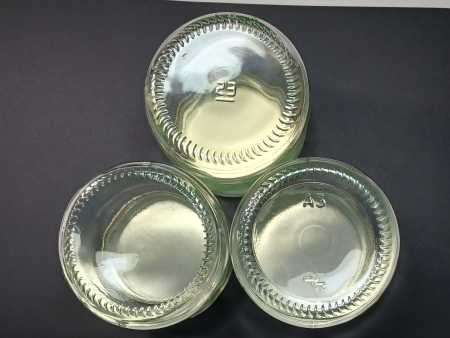
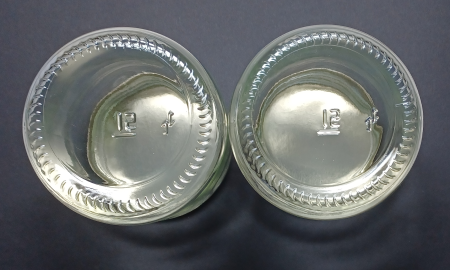
Lids should be:
- Matching i.e., from the same batch.
- Must be spotlessly clean.
- No rust or scratches.
- Polish the outside when on display.
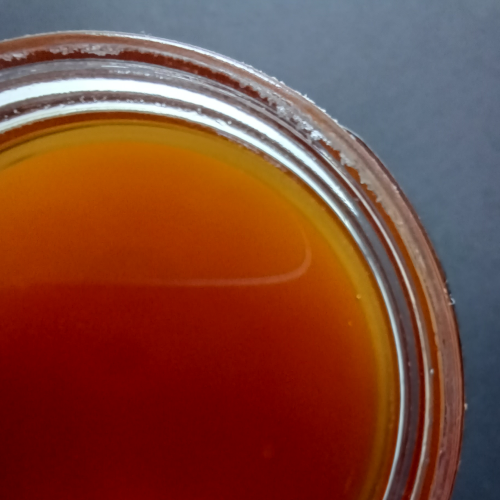
Lids must be spotlessly clean.
Some lids are manufactured with a powder on the polyurethane seal. This is what will happen if you do not wash your lids!!
The Joy of Winning!

We look forward to seeing your honey and other exhibits at the Honiton Show on August 3rd 2023!